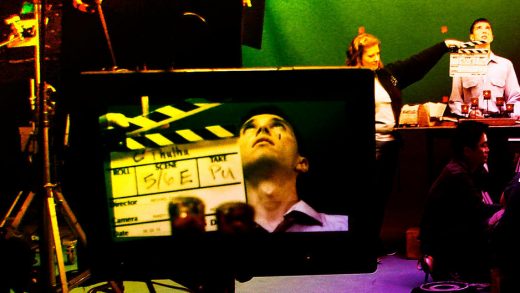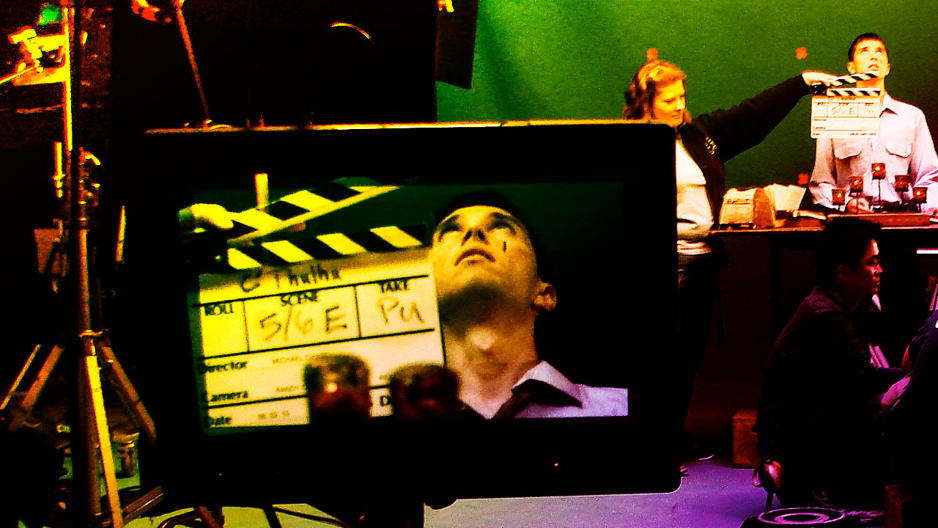Yes, Even Your Company Needs A Video Strategy In 2017
They say a picture’s worth a thousand words, but what about a video? That’s not a rhetorical question. According to Forrester Research, a minute of video is now worth an estimated 1.8 million words—a finding that confirms what marketers and viral stars already know: Video is eating the world.
A third of online activity is now spent watching video, and some analysts predict that could increase to more than two-thirds by the end of 2017. Even Facebook, a platform built on written status updates, may be mostly video five years from now, according to Mark Zuckerberg himself. Last month, no less an authority than Brian Halligan, CEO of internet marketing giant Hubspot, called video the number-one content marketing tool available. Still, many companies remain laser-focused on text and still images—trying to reach customers through the standard mix of blog posts, social media updates and, of course, endless email newsletters.
I get it. Producing video can seem time-consuming, expensive, and complicated. And getting noticed presents its own set of challenges — especially in a world where more video is uploaded in 30 days than the top three U.S. TV networks have created in the past 30 years.
But not having a video strategy for 2017 is like not having a digital strategy in 2000. You might be able to survive for the time being, but holdouts will find themselves seriously left behind and racing desperately to catch up in just a few short years ahead. More and more, digital means video. Like it or not, other media formats are moving to the margins—making it pretty much essential to start putting together your company’s video strategy right about now.
The good news is that it isn’t as hard or resource-intensive as you might think. Reaching a target audience isn’t about having the most sophisticated equipment or the latest high-tech toys, and you don’t have to produce Super Bowl–quality ads in order to make an impact. In fact, many of the biggest trends in video heading into 2017 make it easier for companies to produce video in-house, rather than having to outsource production to an agency.
Tap Your Staff For Onscreen Talent
One of the easiest ways to make effective videos is to tap the talent that’s already on your payroll. Allowing staff to speak honestly and directly to customers creates an intimacy that can instantly cut through the sterile, corporate veneer. In fact, quick and dirty videos made with simple, free tools (like this is one we hacked together for recording screenshots) can often be more effective than slick, commercial-quality ones.
Take a look at this video from Zappos, designed to showcase its work culture. It’s a little messy, but that’s part of the charm—real people talking to real people:
Other companies are experimenting with DIY video to give an edge to their brands as employers, but staff videos can be effective for internal communications, too; here’s how Hootsuite CEO Ryan Holmes uses video selfies to keep his teams up to date, for instance.
Lots of approaches can work. Whether you live-stream town halls or have leaders speak directly to their teams like Holmes does, videos create a visceral, human connection that’s hard to replicate with newsletters or email memos.
Broadcast Live (And Replay Later)
2016 was the year of the live stream, with Facebook Live gaining momentum and turning any given moment into a global broadcast. With Instagram now diving into the streaming game, 2017 will see more companies experimenting with real-time video.
Yes, live broadcast presents challenges, but for this format it’s okay—and even expected—to be spontaneous; viewers will forgive less-than-perfect production. Just make sure you’ve planned a loose structure that revolves around some sort of action, like T-Mobile’s John Legere does with his super-short, informal “Slow-Cooker Sunday” cooking shows.
Most peoples’ short (and possibly shrinking) attention spans mean the average viewer needs something to happen about every nine seconds. But it’s important that you don’t assume your audience is limited to those tuning in in the moment. It’s often under-appreciated how much live video is actually viewed later, as on-demand content. Done well, a live video can live on for months and years. A prime example is the content featured on Whale, the Q&A app from Justin Kan, which lets users engage in a real-time conversation with business experts and then adds those videos to a searchable content library.
Time To Get Personal
Personalized video might sound like a daunting concept, but in practice, it’s pretty straightforward—often just a matter of adding small, personal touches to recordings that speak to individual clients. This can be as simple as using post-production tools to insert their names into the opening frames or into the video itself—say on a ticket or a seat “reserved” especially for them.
The University of Waterloo (which, in full disclosure, has partnered with my company, Vidyard) did this recently with a recruitment campaign that showed individual students’ names on dorm-room doors during a POV video of life on campus. We already know that including video in email marketing can increase click-through rates. But when Waterloo used this personalized tactic, 70% of prospective students opened their emails.
Stringing Together Video “Stories”
Remember that nine-second attention span? One hack to ensure that action is sustained and varied is the “stories” format. Snapchat was the pioneer here, automatically splicing together users’ short clips and photos into a longer video stream. In 2016, Instagram released its copy, and rumor has it that WhatsApp is next.
But this format isn’t just for preteens looking to keep their friends in the loop. Buzzfeed’s Tasty channel has scored big on Facebook with its mastery of the truncated timeline, in step-by-step videos for easy-to-make recipes. This application is almost tailor-made for product guides or even customer support videos.
The real virtue of the “story” format for companies just getting into the video game is that it’s so flexible and forgiving. It’s not hard to shoot six seconds of action here, then three seconds there—all on a smartphone—and this fast-cut technique is better suited to mobile attention spans anyway.
360-Degree Video Is Finally Within Your Budget
While augmented reality and virtual reality still require cumbersome equipment to record and watch, 360-degree video has quietly come into its own. For the uninitiated, 360-degree video allows viewers to either physically move their phones around in front of them or to click and drag their screens in order to change their perspective on a scene—an immersive experience that requires no special headgear.
The special 360-degree cameras for filming this kind of content now cost just a few hundred dollars, meaning pretty much any company can produce its own ready-made immersive video. Red Bull was one of the first out of the gate in applying this technology to its action sports videos, and fashion line Barbour used 360-degree video to offer a VIP view to those who tuned into its 2017 spring and summer men’s collection debut.
But the technology can also liven up more down-to-earth experiences, like speeches, conferences, and parties. You could even set one up in your office so clients can “click in” to your headquarters for an office tour.
The world is already moving toward video—and fast. What’s driving this trend isn’t the desire for slick production-values and Oscar-worthy editing, though, although there’s a place for that; it’s the desire for a connection that feels human and personal. Keeping that at the core of your video strategy won’t just stretch your dollar, it’ll serve you better than any technological bells and whistles in 2017.
Michael Litt is cofounder and CEO of the video marketing platform Vidyard. Follow him on Twitter at @michaellitt.
Fast Company , Read Full Story
(13)



